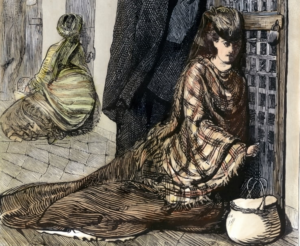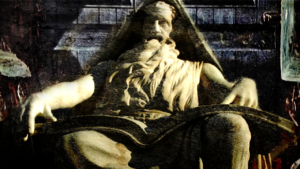Life, Art, and Transgression

A source of disgust and panic to many, to some a wellspring of deliverance and pleasure, transgressive fiction has oft dined leeringly amidst moral controversy and social contention, and this genre finds itself attacked more heavily in times of social repression, political correctness, religious intolerance, inquisition, and mass surveillance.
When the transgressive mode is being attacked the most, that is when it is needed the most, that is when all art needs the transgressive element the most, since transgressive art is one of the most human genres, as it lives for itself and dwells in the abyss beside us. In the oubliette of our lives, its spirit is always there.
American Psycho, by Bret Easton Ellis; Fight Club, by Chuck Palahniuk; Lolita, by Vladimir Nabokov; Naked Lunch, by William S. Burroughs; and The 120 Days of Sodom, by Marquis de Sade: these are horrifying (sometimes black-humored?) yet significant works of Art that each deal with transgression in ways that inadvertently, with intermittent gallows humor, evoke existential questions, possibly at times by accident, as they revolt against puritanical dogma and the domineering banality of modernity, of the everyday invisible oppressions, exposing gateways linking philosophy and Art. Thus, these are liminal works dealing with liminal spaces of reality, dimension, mind, soul, and flesh; they having much in common—in the realms of debauchery, illicit metamorphosis, transgression, and/or the forbidden—with many works of the weird and Decadent: e.g., Oscar Wilde’s The Picture of Dorian Gray; Arthur Machen’s “The White People” and The Great God Pan; “The Death of Ilalotha,” by Clark Ashton Smith; Strange Case of Dr Jekyll and Mr Hyde, by Robert Louis Stevenson; The Hellbound Heart, by Clive Barker; and H. P. Lovecraft’s The Shadow over Innsmouth. Works like these exist mainly for themselves, but they can provide philosophical gifts to the keen soul, gifts that can benefit the mature reader with positive spiritual enrichment, as purgation and pilgrimage and abreaction.
You can more easily find the transgressive spirit in works of satire, comedy (especially black comedy), horror, the weird, the Gothic, dark Romanticism, and the Decadent. It is significant that so many people flock eagerly to the genres of morbidity, crime, Death, taboo, sin, loss, and fear. It is my personal opinion that those who can’t see value in those types of Art have no mature concept of fun, of escapism, of humanity, or even of Art itself.
Art often imitates life, and it is said sometimes life imitates Art; this idea is both a liberating boon and a somber curse, but it does not necessarily suggest all people become what they read or that they act upon the things they see or read about or experience in artistic works. Art is not mind control nor brainwashing, and anyone trying to use Art as such acts as a villain against Art. To believe in the idea that life can imitate Art, it is an awareness of how some people, after having read a piece of writing or experienced an artwork, will simply begin to think more artistically, begin to act more artfully, gaining something of artistic quality, deciding for themselves how to alter their thoughts and life into works of Art.
Art cannot metamorphose a human being into a monster, no matter how monstrous the themes and/or details within the artwork are perceived to be, for Art is only Art, not reality, not a weapon, not psychic software. Evil will always look for an excuse to commit evil; it doesn’t need Art to give it permission.
Some people may be terrified of transgressive fiction, as they might say the genre wants us to become comfortable with evil, but they don’t see deep enough into this kind of art. Transgressive art is more about wanting to step inside a dungeon of the uncomfortable, to face and overcome the taboo, while at the same time becoming comfortable with the past, with ourselves as human beings; the genre seeks a way to express the self, to master the self; it is the break from perfectionism and the hunger for something far more meaningful than ephemeral emotions, desires, memories, laws, conventions, dogmas, or ideas. This genre is an exhale, a scream of relief and individualism. Yes, it is nihilistic, but the transgressive genre brings with it a nod of understanding, no misunderstandings, and forth its smutty tongue arises a sardonic word of hope as well, since transgressive art shines empathy unto each individual’s self.
Books, stories, paintings, sculpture, films, and video games—such things do not turn people violent or insane, they do not make an individual into a criminal, they do not transform an innocent soul into a demon. Works of Art, films, and video games do not convince anyone to do immoral things. Sport and Art, they do not somehow trick or manipulate humans towards illegal activity.
Only the individual who purloins something sacred out of the hands of Art or Sport will find themselves misplaced. Only a diseased soul can debauch a work of Art. Only one who is already corrupt can ravish a work of Art into a diabolic mirror of narcissistic excess, self-destruction, and will thusly be tainted themselves thrice-fold by that hollow reflection. This is no fault of the artist, author, writer, or creator. Artists and works of Art are not and should not be held responsible for the illicit actions and/or wrongdoings of other individuals.
Writing transgressive fiction creates catharsis, escape, and contemplation, which leads to the creation of more empathy and compassion and pity for the human condition and human suffering and human sins, thus generating deeper understanding about ethical and moral truths. From the transgressive genre, we can gain deeper appreciation for life and the things of truest value, like family and love and freedom. It is a genre that can teach us how to see the deeper bonds holding together all that which we cherish. In truth, transgressive art can be said to be a path to forgiveness, ataraxia, inner peace, nirvana, great spiritual and/or philosophical insight, objective beauty, and transformation. transgressive fiction is a pure art, as it is constantly existing for itself and for no other reason, burning with revolution, burning with questions about individuality, existing in oblivion. It is a genre that, at the very least, asks vital questions.
Looking upon a deformity, does this make one deformed?
Looking upon death, does this make one dead?
Looking upon sin, does this make one sinful?











